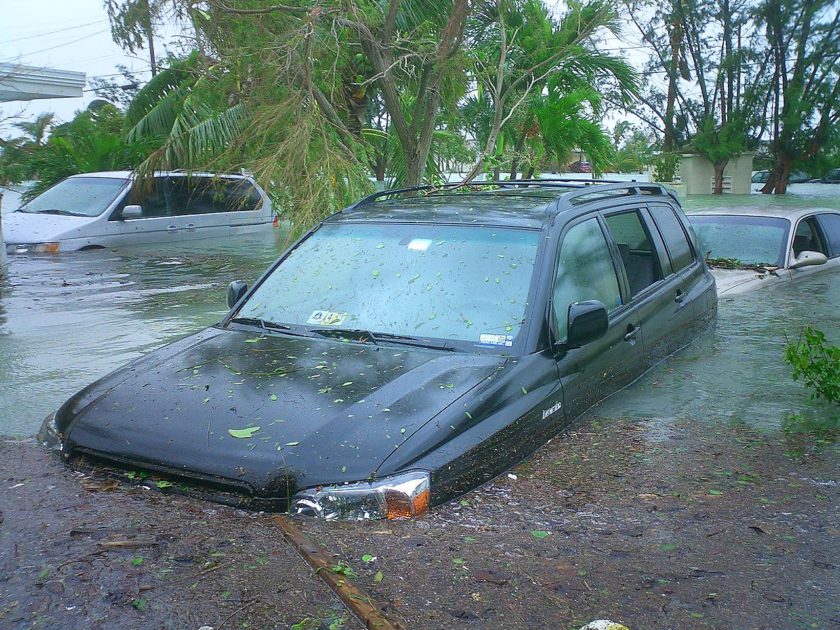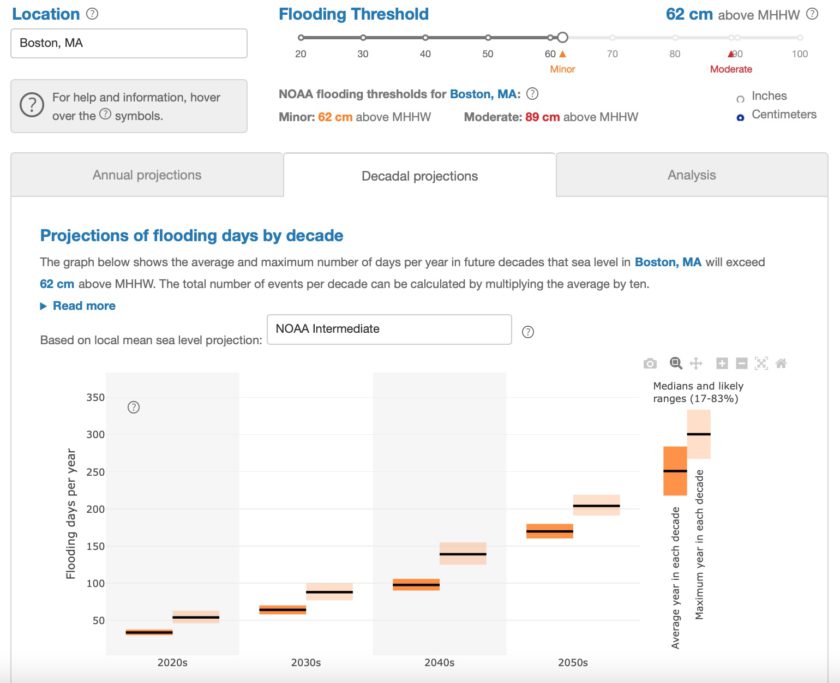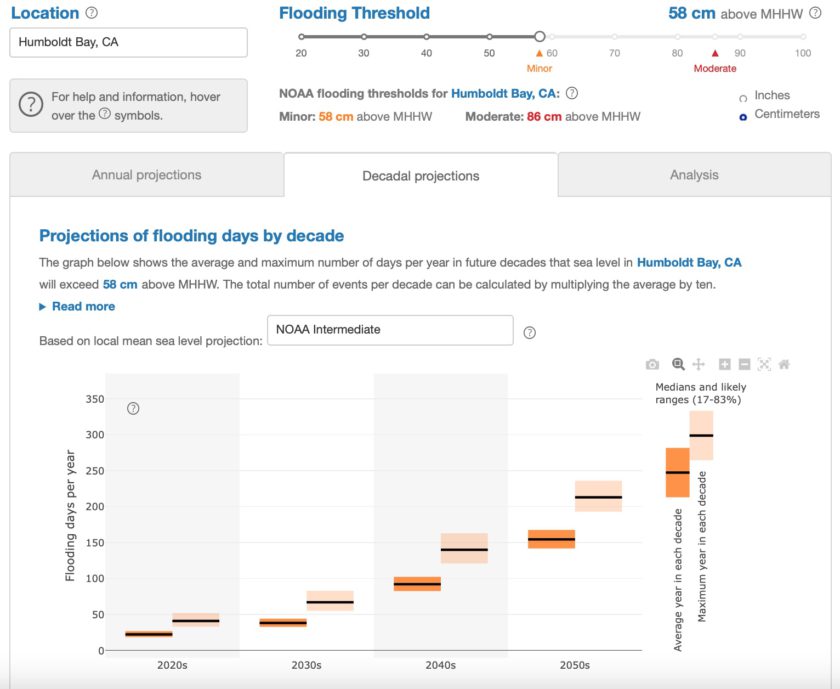
There is a regular wobble in the Moon’s orbit that takes 18.6 years to complete. Various media stories have flaged this up as the potential cause of extensive flooding in the 2030s. We need to step back a bit to be able to truly appreciate the actual story here.
To be clear …
- The moon wobble is not the root cause
- It is not a single event, nor is it unique or new
- The flooding that is coming has extremely serious implications for costal cities, not just in 2030, but beyond
Let’s take this step by step.
What exactly is the Moon Wobble?
As I mentioned above, the moon wobble is not new, nor unique, but rather it is the way things are.
What is happening here is Axial precession. Since the Moon’s axial tilt is only 1.5° with respect to the ecliptic (the plane of Earth’s orbit around the Sun), this variation is slow and small, hence it takes 18.6 years to complete one cycle.
It is not the complete picture, there is also Apsidal precession every 8.85 years, and Nodal precession every 18.6 years.
You can read more about it here on Wikipedia.
It might surprise you to also learn that the orbit of the earth around the sun is also not consistent, but instead changes and goes through cycles that vary the orbit from a circle to an eclipse. These cycles are known as Milankovitch cycles. This happens because of the gravitational pull from other bodies within the solar system. Net effect, our orbit varies on a regular cycle that bumps us in and out of ice ages roughly every 50,000 years. Least you wonder, yes, it greatly impacts our climate, and no, climate change is not due to this.
Milankovitch cycles operate on long time scales, ranging from tens of thousands to hundreds of thousands of years.
The Global Warming that has been observed and measured is rapid warming since the pre-Industrial period (the period between 1850 and 1900), and particularly since the mid-20th Century.
Over the last 150 years, Milankovitch cycles have not changed the amount of solar energy absorbed by Earth very much, hence they are not an explanation for the observed warming.
Scientists are highly confident that Earth’s recent warming is primarily due to human activities — specifically, the direct input of carbon dioxide into Earth’s atmosphere from burning fossil fuels. All the available evidence tells us this.
New Study Projects a Surge in Coastal Flooding, Starting in 2030s
So, this is the latest news. There is a new study that has resulted in a warning about flooding in the 2030s …
In the mid-2030s, every U.S. coast will experience rapidly increasing high-tide floods, when a lunar cycle will amplify rising sea levels caused by climate change.…
…Led by the members of the NASA Sea Level Change Science Team from the University of Hawaii, the new study shows that high tides will exceed known flooding thresholds around the country more often. What’s more, the floods will sometimes occur in clusters lasting a month or longer, depending on the positions of the Moon, Earth, and the Sun. When the Moon and Earth line up in specific ways with each other and the Sun, the resulting gravitational pull and the ocean’s corresponding response may leave city dwellers coping with floods every day or two….
The Root Cause is not the Moon wobble it is Climate Change
Just to make this wholly and completely clear. The moon wobble that makes the various headlines is not the exclusive cause. The moon wobble cycle is every 18.6 years. Because sea level is rising, then when the moon next exerts a sufficient pull to cause maximum high tides in the 2030s, there will be flooding.
The Moon Wobble is a tipping Point
The moon wobble is not new or dangerous; it was first observed and measured in 1728. What is new is how the next cycle will impact us because of the rising sea level due to climate change.
In half of the Moon’s 18.6-year cycle, Earth’s regular daily tides are suppressed: High tides are lower than normal, and low tides are higher than normal. In the other half of the cycle, tides are amplified: High tides get higher, and low tides get lower. Global sea level rise pushes high tides in only one direction – higher. So half of the 18.6-year lunar cycle counteracts the effect of sea level rise on high tides, and the other half increases the effect.
At the next high water mark in that regular cycle we hit a serious tipping point.
Where exactly will there be flooding?
The researchers have a high tide flood projection tool (you can launch via here). It is available via the NASA team’s sea level portal. This is not there for amusement. They are providing data for decision makers so that they can prepare.
NASA is a publicly funded body, so it is also open to anybody who is interested.
What will happen?
Use the tool and what you will begin to grasp is that while the 2030s will be bad, the 2040s will be even worse, and then after that the 2050s will be even worse. Rinse and repeat with successive waves of increasing levels of flooding.
Here is the projection that I randomly picked for an East Coast city; Boston.
For Boston, they flood when the water reaches 62 cm above the Mean higher high water (MHHW). What unfolds is an ever increasing curve of more and more flooding over time….

How about the West Coast?
Here is the projection for Humboldt Bay, CA …

What is coming is not a unique once only event. It is instead part of the ongoing consequence of climate change.
In a warming world ice not only melts, but water also expands as it gets warmer. The impact is that sea level is rising.
What will happen in the 2030s is simply a tipping point that leads to more flooding. The decades that follow will be even worse. As the sea level increases, the flooding will continue to escalate and become even more severe.
Doing nothing about climate change is not an option. The time for decisive meaningful action is now.
Further Reading
The NASA Press Release regarding the new study can be found here.
The study paper itself is here – Rapid increases and extreme months in projections of United States high-tide flooding
